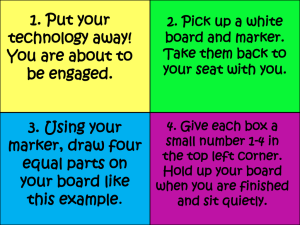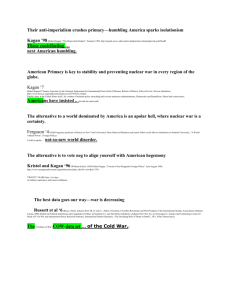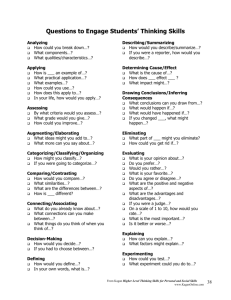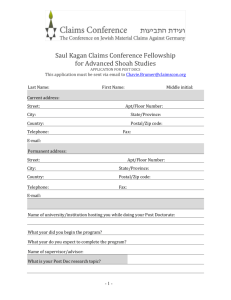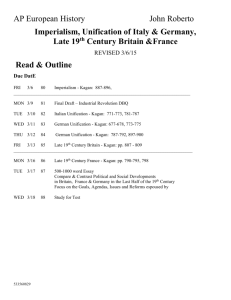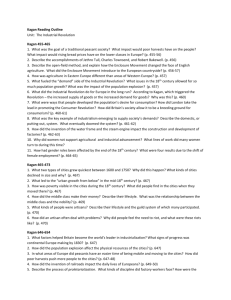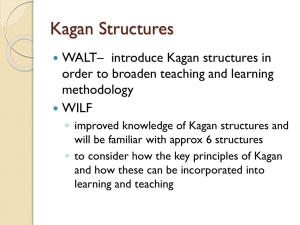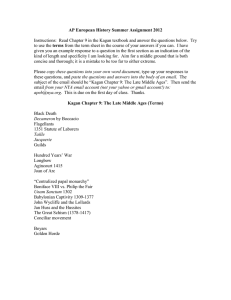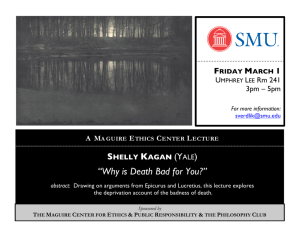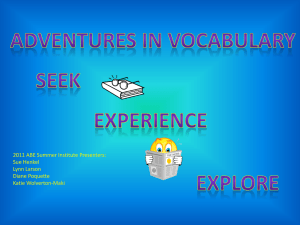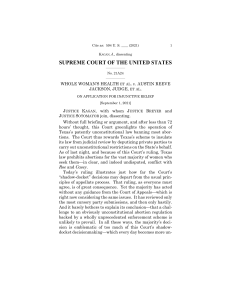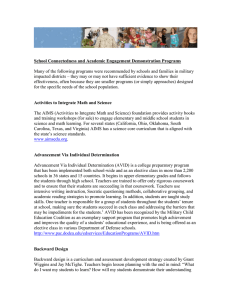Structures - cooperationsmiles
advertisement
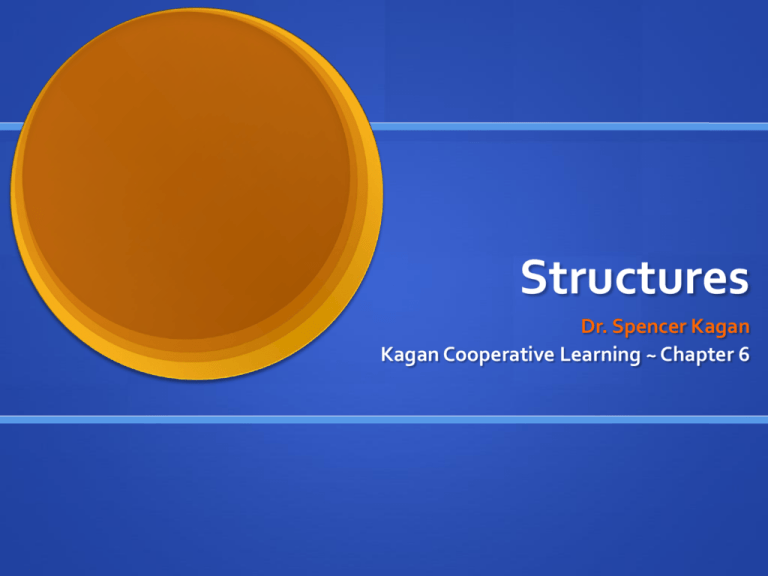
Structures Dr. Spencer Kagan Kagan Cooperative Learning ~ Chapter 6 “If teaching were the same as telling, we’d all be so smart we could hardly stand it.” – Mark Twain Good teaching is student-centered, focusing on learning not teaching. Good teaching goes beyond the words that comes out of the teacher’s mouth, it reaches out to students and asks: What is learned? Structures……. engagement and retention from meaningful experiences active learning adventures more likely to reach students with different intelligences and learning styles lose far fewer students to boredom and disengagement help students enjoy school more develop a wide range of personal and social skills The levels of knowing how to use structures: Unconscious incompetence – never heard of it! Conscious incompetence – aware but you don’t know how to do it Conscious competence – you can do it……..but you have to think about it a lot Unconscious competence – like riding a bike or driving a car – you go on about the structure automatically Structures are like tools in the teacher’s toolbox Structures make it POSSIBLE to do……………. The impossible job!!! Achieve high academic standards Very diverse group of learners Teach social skills Thinking skills Communication skills Make wise decisions Be creative Develop multiple intelligences Acquire interpersonal skills Become persons of character Meet the Teachers: A Teacher B Teacher C Who says this? “I will ask a question, and call on someone to answer it.” Teacher A “Talk the answer to this question over in your groups. Turn to your partner and discuss the question and answers.” Teacher B “Let’s use RallyRobin to discuss the possible answers to this question…” Teacher C What looks like this? Students sitting in straight, orderly rows…… Teacher A’s Classroom Students sitting in groups. Teacher B’s Classroom Students sitting in learning teams with designated roles and responsibilities. Teacher C’s Classroom Where would students…? KEEP YOUR EYES ON YOUR OWN PAPER!!! Teacher A’s Classroom Help each other. Solve the problem with a group. Teacher B’s Classroom Serve as a Sage or a Scribe Teacher C’s Classroom Teacher A Needs to step UP her game….. Teacher B Does some good things, but could be involving and motivating students more by using structures. Teacher C Has higher achievement gains, improved social skills, required participation by all students, and active engagement by all. Structures organize classroom instruction are content free and repeatable implement the basic principles of cooperative learning (PIES) Know how to select the right tool for the job at hand. Kagan has over 200 structures. Classbuilding (Find Someone Who or Inside-Outside Circle) Teambuilding (Find-the-Fiction or RoundRobin) Social Skills (Talking Chips, Circle-the-Sage) Communication Skills (Match Mine or Same-Different) Decision-Making (Numbered Heads Together or Team Statements) Knowledgebuilding (Mix-Freeze-Group or Showdown) Procedure Learning (Fan-N-Pick or Jigsaw) Processing Information (Popcorn or Journal Reflections) Thinking Skills (Jot Thoughts or Think-Pair-Share) Presenting Information (One Stray or Carousel Review)
